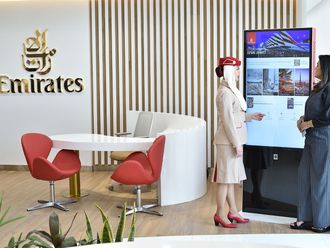
The world’s attention is turning to Dubai and how COP28 will shape the future development of global industries in pursuit of a sustainable environmental future for all.
Every year, one message that consistently cuts through every COP is this: we must move faster.
We must decarbonize our global economy faster to keep the Paris Agreement 1.5c target alive and stave off the worst effects of climate change.
This is why thyssenkrupp will be joining COP28; we’re bringing a diverse team including top executives and experts to be part of the conversation, to share our expertise and contribution, and encourage deeper collaboration throughout our industry and beyond.
Ambitious adoption
After power generation, the industrial sector is the biggest global emitter of greenhouse gases, representing 30 per cent of annual emissions and 40 per cent of global energy consumption. We’re highly aware of the carbon-intensive nature of our own operations, as thyssenkrupp Steel emits approximately 2.5 per cent of total greenhouse gas emissions in Germany.
Conversely, this means that almost nobody can make a greater contribution to decarbonisation in Germany than we can.
Don’t misunderstand me: It is not easy to do. Change begins at home, which is why our green transformation efforts to achieve complete carbon neutrality by 2050 are in full swing.
On October 1, thyssenkrupp brought together its key decarbonization technologies under a single segment. Alongside my CEO role, I am also leading the new segment. By building a green industrial powerhouse of interconnecting technologies, we turn from being part of the climate change problem to becoming an integral part of the solution.
Rapid industrial decarbonization means unlocking the future of ecologically sustainable industries anywhere in the world. Put simply, if we can create the means for greener industry, and then transport them at scale, we can make global industry truly sustainable.
Risk vs reward
Industrial operations are based on economies of scale and feature processes that may have remained broadly similar for years, if not decades. Completely overhauling the infrastructure and daily operations of such outfits is a daunting prospect, which is exactly why we must share our experiences and disseminate best practices to help every industrial sector scale up its tech adoption with greater speed and surety.
COP28 is the ideal forum to do this, as it fosters collaboration on an international scale. Building alliances is the surest way to build the necessary confidence to act faster and bolder when it comes to decarbonization. We are ready to go further and work together in global initiatives.
Green ambitions + green funding = green hydrogen
Regarding our own efforts, steel making is an extremely emissions-heavy business; the thyssenkrupp Steel plant in Duisburg produces 30,000 tons of pig iron per day, producing about 55,000 tons of CO2 in the process. However, hydrogen is the key to eliminating these emissions, as its use means that only water vapor is emitted instead of carbon dioxide.
To achieve a hydrogen ramp-up on a truly industrial scale, we’re forging ahead with the ‘tkH2Steel’ decarbonization project – a technologically new plant combination where hydrogen allows for the creation of 2.5 million metric tons of directly reduced iron per year. This is a crucial step towards producing three million tons of CO2-reduced steel per year from 2030.
Not only will this project save a ton of emissions (6 million tons by 2030, to be exact) it will serve as a springboard for Germany’s green hydrogen production, with this facility alone aiming for a target annual capacity of 143,000 metric tons. This is what iterative change looks like – not only are we decarbonizing our operations, we’re creating the technological advancements and the literal fuel for green transformation across the industry.
A turning point?
As the opening ceremony for COP28 draws near, all attendees should use these remaining days to consider what they will bring to the table. While use cases, tech adoption experiences (good and bad), suggestions and hard data are all invaluable, perhaps the most important element to bring is a collaborative mentality.
Every agreement, target and measure produced at previous COPs was the work of painstaking cooperation and the vision to deliver a net-zero world economy. At COP28, everyone has their part to play, and, increasingly, that part must be aligned with the efforts of others to leverage its full potential.









